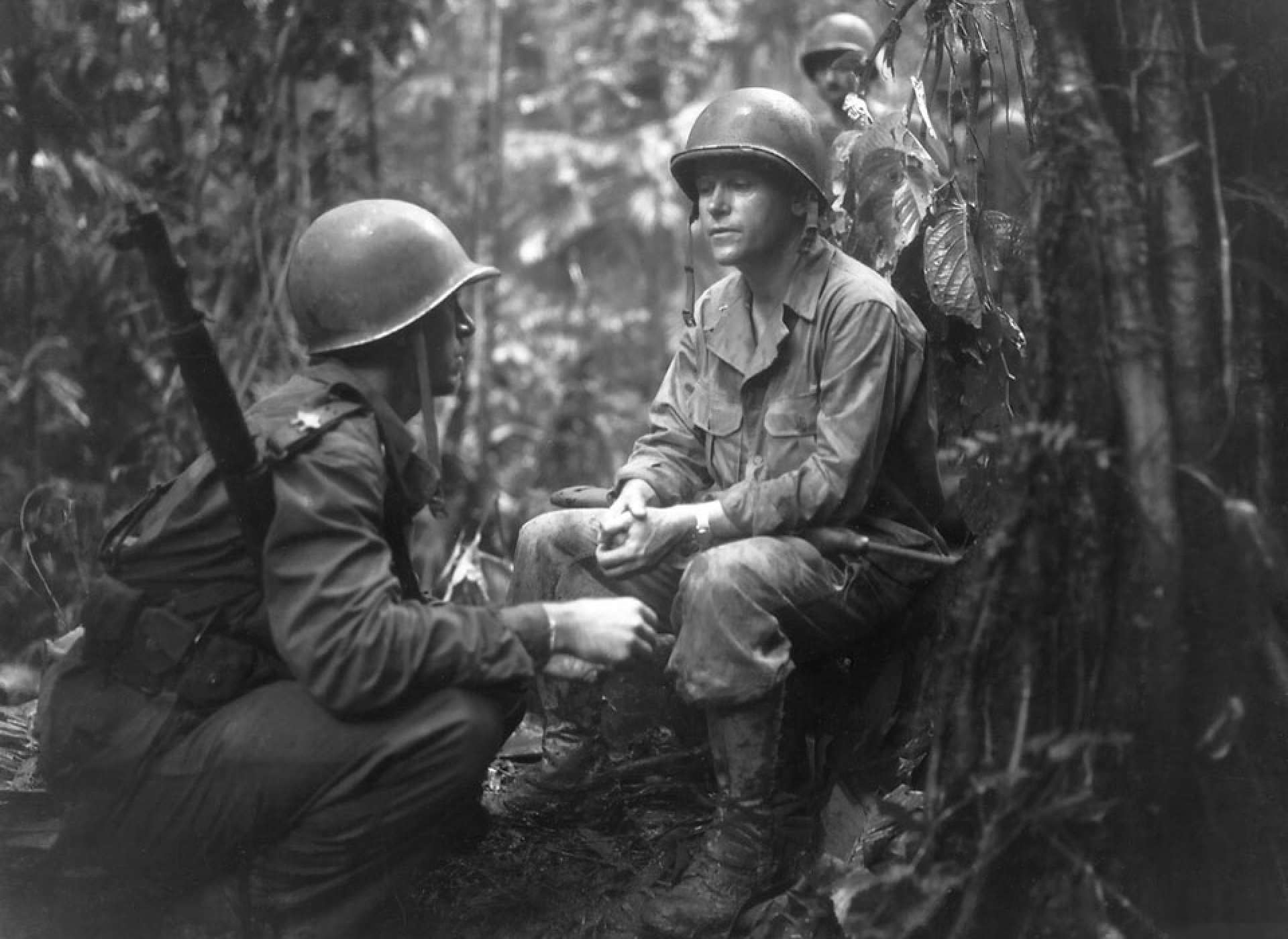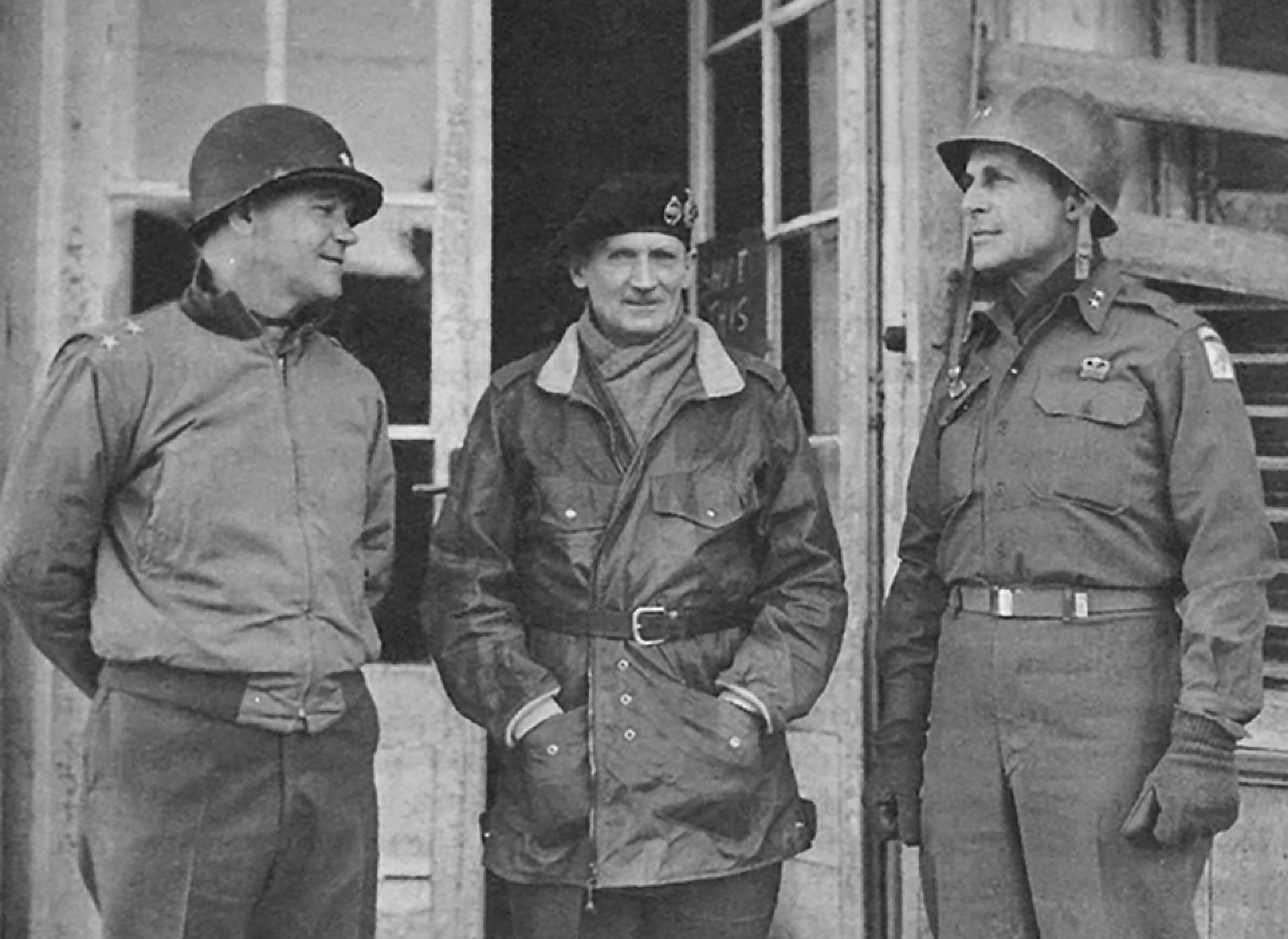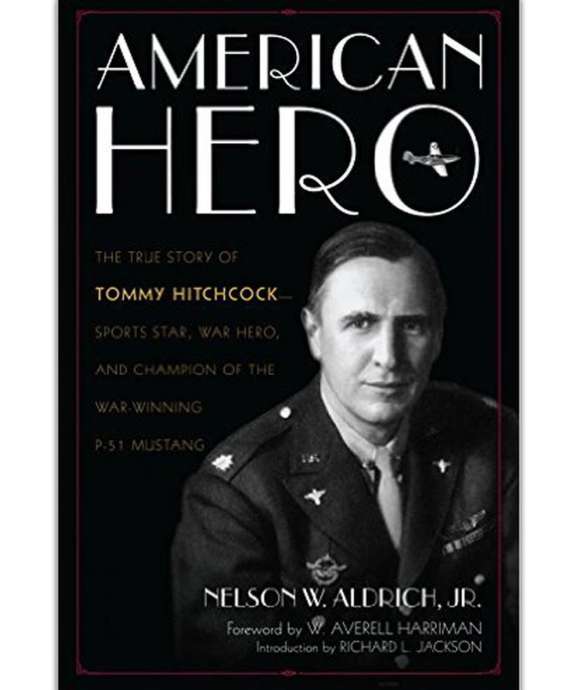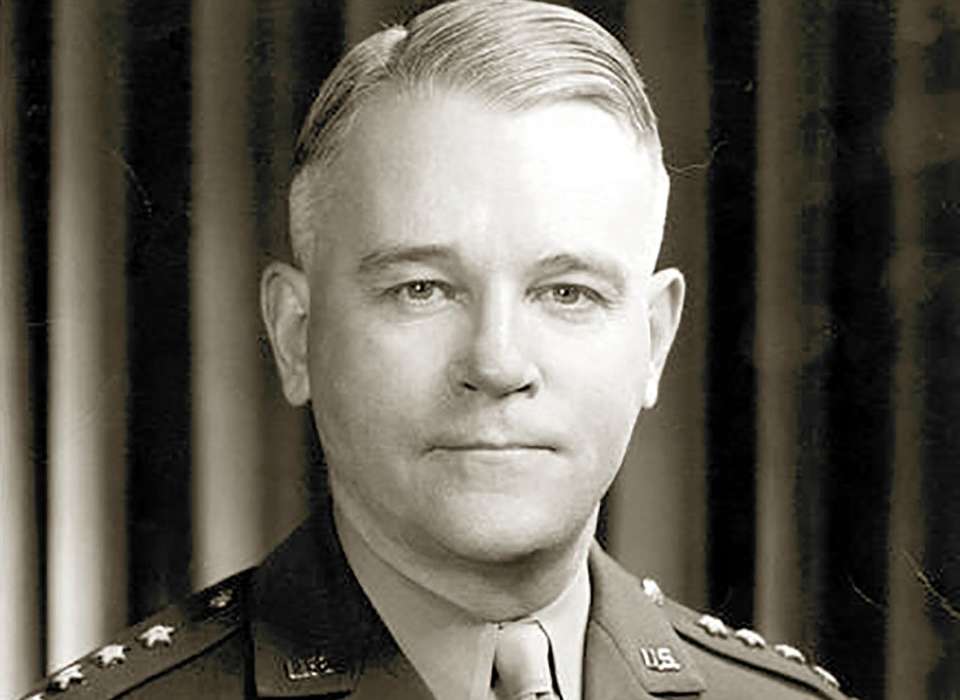During World War II, roughly 280,000 men and women from Louisiana served in the Armed Forces. There were over 30 military installations in the state, in addition to more than 40 prisoner of war camps. Louisiana industry supplied the Allied war machine with vital materials such as oil, synthetic rubber, and ships of all sizes. Civilians collected scraps, grew Victory gardens, and bought war bonds to build aircraft. Louisianans were all in it together, and this series highlights when the Pelican State went to war.
When thinking about the great leaders in the European theater, one name often gets lost in the shadows. It’s not surprising, there were so many men with at least one star on their helmet. But digging into great leaders in the European theater, one name should be remembered—General Joseph Lawton Collins, known as Lightning Joe. Despite his distinguished leadership and role in defeating Nazi Germany, Collins has never garnered as much attention as other top army officers. One of the few books written about him is his 1979 autobiography Lightning Joe, an Autobiography.
Collins was born in New Orleans in 1896, the tenth of 11 children born to Irish immigrant Jeremiah Collins and his Louisiana-born wife, Catherine Lawton. By the time Joe came along, the family lived in Algiers, where Jeremiah ran a grocery with an attached English pub on Elmira Avenue. The large family kept chickens and a cow, and the children all helped with chores or in the store. In his autobiography, Collins reflects fondly of his childhood in Algiers, reminiscing on crossing the Mississippi River with the family horse and wagon, playing in the clay mud after rainstorms, and learning at home with his siblings. At age 16, Collins left for Louisiana State University in Baton Rouge. His heart had been set on attending West Point, as his older brother had, but the appointment for his district was given to another. However, with the help of his uncle, New Orleans Mayor Martin Behrman, Collins was able to gain a place at West Point that same year.
Collins loved his time at West Point, where he was classmates with young men whose names would become etched in history, among them Matthew Ridgway, Mark Clark, and Norman Cota. This distinguished class graduated in April 1917, just as the United States was entering the Great War. Graduating 35th in his class, Collins had done well at West Point, and chose to enter into the infantry. He said it was a choice he would never regret.
Assigned to the 22nd Infantry Division, Collins spent the duration of World War I stateside with the division, mainly in the New York area. As the Spanish Flu epidemic went through the division’s camp, Collins contracted the disease. Unlike many young men, he recovered from the illness and in the spring of 1919 was sent to Europe for occupation duty. Though his time in Europe was brief, lasting until late summer of 1921, Collins’ time there was productive. He served as the training and operations officer under Lieutenant Colonel Jonathan Wainwright and met his future wife, Gladys, an American woman there with her parents.
In the summer of 1921, Collins and his new wife returned to the United States. For the next 12 years Collins rotated in and out of army training schools as both a student and an instructor. There was little else for army officers in the quiet postwar years but to teach or to learn, and the lessons and relationships gained from those years were to serve Collins well in his career. While teaching at Fort Benning Collins met General George C. Marshall. The elder officer took a liking to Collins, and the good rapport between the two would influence Collins’ career.
By the mid-1930s, Collins was tired of the scholarly life and ready to serve overseas again. The family had grown, and Collins and his wife were parents to three young children. In 1933, the whole family boarded a transport, their final destination the Philippines. Collins’ time in the Philippines was spent working on improvements to the Philippine units and the physical resources on the island of Luzon. The Collins family returned to the United States in 1936 and Joe was sent to additional schooling.
As war clouds gathered on the horizon and Europe was overrun by the German army, Collins was assigned to one of the new army corps being organized. In December 1940, Collins became the Chief of Staff for the VII Corps, comprised of three national guard divisions: 27th, 35th, and 33rd. Over the next year, the VII Corps participated in major maneuvers in Tennessee, Arkansas, and Louisiana, giving Collins valuable experience “in the field.” In December 1941, the Corps was stationed in the Birmingham, Alabama, area. Within a week after the Japanese attack on Pearl Harbor the VII Corps was ordered to prepare to move to California to defend the northern part of the state.Collins left Alabama for California on December 13, going ahead of the Corps and his family to prepare for the arrival of both. Instead, Collins would not see his family again for two years or the VII Corps for three.

Collins (right) confers with Major Charles Davis, commanding officer of the 3rd Battalion, 27th Infantry Regiment, on New Georgia in August 1943. It was in the Pacific that Collins got the nickname “Lightning Joe.” Courtesy of the US Army.
Just a day after arriving in California, Collins got word that his orders had changed. The officer appointed as the Chief of Staff of the Hawaiian Department had been killed in a plane crash while making his way west across the country to reach Hawaii. Collins had been selected as his replacement. The Hawaiian Department was still reeling when Collins arrived just a week after the attack. In his new role Collins helped to build up the Hawaiian defenses until May 1942 when he was given command of the 25th Infantry Division and promoted to Major General.
In August 1942, the United States Marine Corps invaded the Pacific island of Guadalcanal. Facing a well-entrenched, well-supplied, and determined Japanese force, the fight became a long slog. In November, the 25th Division sailed for Australia. While underway they were assigned to the Southern Pacific and ordered to relieve the First Marine Division on Guadalcanal. As part of the XIV Corps, the 25th fought with the Americal Division on Guadalcanal from December 1942 until February 1943, when the Japanese forces there were finally defeated. There the division earned the nickname “Tropic Lightning,” and Collins became known as “Lightning Joe.” The Corps acted as a garrison unit there until July, when they were reassigned to the New Georgia Campaign, participating in the seizure of several islands including New Georgia. In December, the division was sent to New Zealand to rest, recover, and train for their next engagement, and Collins was given leave and permission to return home.
After two years away from his family, Collins returned home in December 1943. While Stateside, Marshall told Collins to take some time with his family and arranged for him to spend several days with his wife at a resort in West Virginia. There, an unexpected visitor brought Collins some surprising and very welcome news. General Dwight Eisenhower was there with his wife, and upon seeing Collins exclaimed, “Why Joe! I didn’t know you were down here. I understand you are coming over to join us!” Collins was headed for the European theater.
He arrived in England in January 1944 without assignment, but quickly found that his leadership and fighting style were just what Eisenhower and General Omar Bradley were looking for. Although General Douglas MacArthur had rejected the idea of putting Collins in command of a corps due to his “young age,” Eisenhower did not have the same qualms and at 47, Collins became the youngest corps commander when he was given command of the VII Corps.
Now in charge of the corps he had helped establish barely three years before, Collins threw himself into the job. Planning was in full swing for a major landing in France, and Collins had to get to know his commanding officers and the naval officers with whom he would be working. The VII Corps was given the job of landing at Utah Beach and then taking the French port city of Cherbourg. Added later in the planning, the assignment became critical to the long-term success of Allied forces in France. Cherbourg was the only deep harbor port in the invasion area which would be capable of supporting the massive supply chain.
On the morning of the invasion, Collins stayed aboard the USS Bayfield (APA-33), the flagship for Utah Beach. Going ashore the following day, Collins visited the commanding officers of the divisions under his corps, including his old West Point classmate, now Major General Matthew Ridgway, commanding the 82nd Airborne Division. Taking note of situations and leadership first-hand on the ground, Collins did not hesitate to relieve commanders not living up to his expectations. Over the next several months he tinkered with his commanding officers until he had the Corps operating at maximum efficiency.
The battle to secure the Cotentin Peninsula and take Cherbourg took over three weeks, but the city was in Allied hands by the end of June. With the peninsula secured, Bradley turned to Collins to begin a breakout from Normandy. Collins was instrumental in refining the plan for the breakout, nicknamed Operation Cobra. As the Allies fought to break out of Normandy, the VII Corps engaged in fierce fighting in Mortain and helped push German forces out of the Falaise Pocket. By August the VII Corps was marching to Paris after three months of intense fighting.
Collins led the VII Corps through fierce fighting in Europe. After Paris the corps pushed to the Siegfried Line, took Aachen and then became bogged down in the Hürtgen Forest. As German forces broke through Allied lines and the Battle of the Bulge began, the VII Corps held the northern end of the Bulge, launching successful counterattacks. With the defeat of the German breakthrough, the Roer River was quickly crossed, and by March 7, the VII Corps had taken Cologne. They crossed the Rhine next, and as part of the First Army, helped to encircle Field Marshal Walter Model’s Army Group B in the Ruhr industrial area.
By April, the push east was on, and the VII Corps was fighting their way towards the Elbe River. On April 12, the 3rd Armored Division of the VII Corps discovered the prison camp at Nordhausen, one of the countless prison camps that would be liberated by Allied forces. Fighting continued on the drive east for almost two more weeks. On April 24, Collins informed First Army commander General Courtney Hodges that enemy resistance in the VII Corp’s zone was finished. The men of the VII Corps laid down their weapons after 337 days of combat.

(Left to Right) Collins, Field Marshal Bernard Montgomery, and Maj. General Matthew Ridgway, commanding officer of the 82nd Airborne Division and a classmate of Collins’ at West Point. Courtesy of the US Army Center for Military History.
Amid celebrating the linkup with Russian forces along the Elbe, Collins was told a Russian officer wanted to meet him. They shared several toasts, the Soviet officer paying tribute to American aid to his country. Collins moved his headquarters to Leipzig, where he met with other Soviet officers, happy to share in their success against Nazi Germany. In his autobiography, Collins recalls the announcement of the surrender as “anticlimactic for us, because we had not been fighting since the fall of Dessau.” There was celebrating later as he listened to British Prime Minister Winston Churchill make the official announcement over the radio.
With the war in Europe over, the VII Corps was called up for the Pacific. Collins returned to the states for 30 days leave and on June 30, 1945, elements of the VII Corps departed Le Havre, France, for California and assignment in the Pacific. Collins, still the commanding officer of the Corps, made it only as far as California before the war in Japan ended.
In the postwar years he served as Chief of Staff of Army Ground Forces, director of information for the US Army, and was the Chief of Staff of the US Army during the Korean War. He also represented the United States in Vietnam in 1954-1955 before retiring in 1956. Under Collin’s leadership, the VII Corps spent 337 days in combat in World War II, travelled 1,200 miles in Europe, and was credited with destroying 14 German divisions. Collins was three times awarded the Army Distinguished Service Medal during the war for his leadership. He was also awarded the Silver Star twice for “conspicuous gallantry and intrepidity in action against the enemy.” Lightning Joe died in 1987.

Biographies
Browse the Museum Store's robust collection of biographies describing first-hand accounts of World War II.
This article is part of an ongoing series commemorating the 75th anniversary of the end of World War II made possible by Bank of America.
Kali Martin
Kali Martin is a former Research Historian of The National WWII Museum's Jenny Craig Institute for the Study of War and Democracy.
Cite this article:
MLA Citation:
APA Citation:
Chicago Style Citation:






![Max Fuchs, New York City cantor, sings as Rabbi Sydney [sic] Lefkowitz, Richmond, VA, conducts the first Jewish services from Germany.](/sites/default/files/styles/max_650x650/public/2025-10/image1.jpg)



